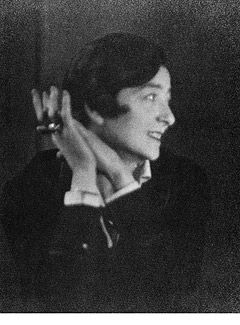Eileen Grey
- fehimekubraoner
- 6 May 2016
- 2 dakikada okunur

Born in Enniscorthy, County Wexford, Ireland in 1878, Eileen Gray spent her childhood in London and was among the first women to be admitted to the Slade, where she took up painting in 1898 before undergoing an apprenticeship in a London lacquer workshop. The experience she gained in working in this highly specialised medium was to influence her profoundly when she moved to Paris in 1902. After further training in lacquer work and cabinet making, she quickly established herself as one of the leading designers of the lacquered screens and decorative panels so beloved by the followers of art deco, and even managed to cause a riot by showing a stark white lacquered boudoir at the 14th Salon des Artistes Décorateurs in 1923.
In 1922 she opened her own gallery, Jean Désert, in Rue du Fauborg Saint Honoré as an outlet for her designs. During the 1920s and 1930s she became one of the leading exponents of the revolutionary new theories of design and construction. She worked closely with many of the outstanding figures of the modern movement, including Le Corbusier and J.J.P Oud. Well to the fore of the group she exhibited chrome, steel tube and glass furniture in 1925 - the same year as Mies van der Rohe and Marcel Breuer and well before Le Corbusier. The furniture was used in Eileen Gray's own interiors, the most celebrated of which was that completed in 1922 for the famous modiste, Madame Mathieu-Lévy (better known as Suzanne Talbot). Her interior design schemes of the period seem both modern and stylish even today.
Bibendum
(1926) Polished chromium plated tubular steel base. Fully upholstered seat, back and armrests covered in fabric or leather in various colours. H 730mm SH 410mm W 900mm D 780mm *Eileen Gray used this chair in a few of her interiors. The design was influenced by the then famous 'Bibendum' Michelin Man of inflated tyres, which remains Michelin's trade mark. She was also jesting that this was her response as a feminist to Le Corbusier's 'Grand Confort'.

Coffee table
(1927) Eileen Gray was always interested in multi-functional furniture. In this case she wanted a table for her new house in Roquebrune Cap Martin that could be used 'over her knees' while sitting, or as an occasional side or bedside table. Adjustable table. Polished chromium plated tubular steel frame. Top: Clear or tinted polished plate glass or metal satin black finish.




Kommentare